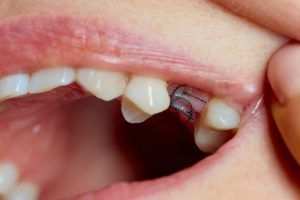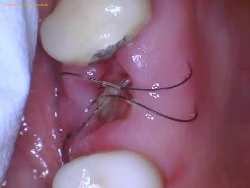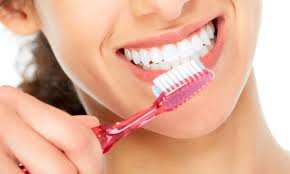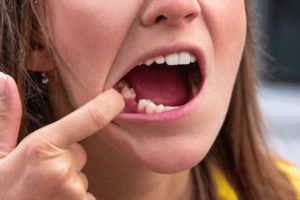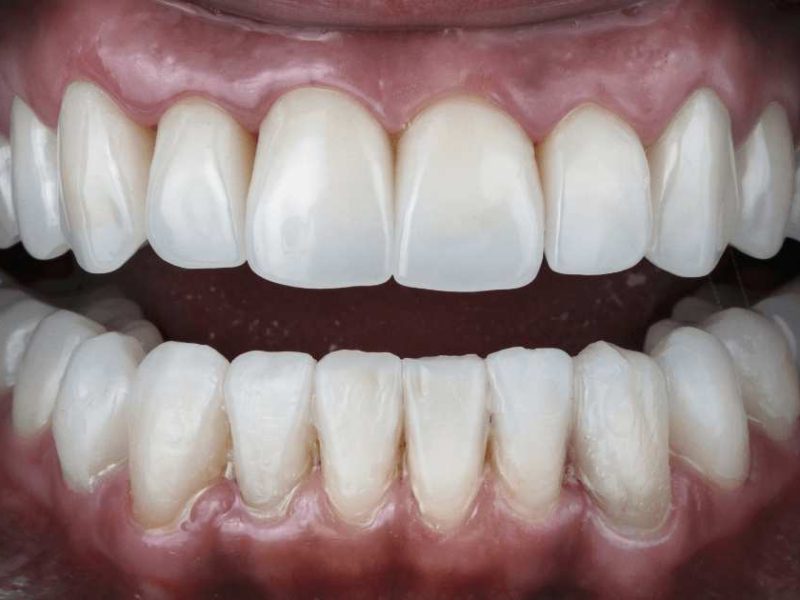Usually carried out between the ages of 17 and 25, having your wisdom teeth extracted is a regular dental surgery. Many times emerging incorrectly, these third molars get impacted, crooked, or cause crowding in your mouth. Many doctors advise removing wisdom teeth even before they produce difficulties in order to avoid future oral health concerns including infections, cysts, or damage to nearby teeth. Your oral surgeon will commonly put wisdom teeth stitches—sutures—at the surgical site following the extraction. By covering the wound, reducing bleeding, and shielding the exposed tissue from germs and food waste, these stitches are absolutely essential in allowing your mouth heal. Wisdom teeth stitches are nothing to worry about, even if at first they may appear frightening; if correctly maintained, they can greatly hasten healing.
Many patients, nevertheless, are curious: exactly what are these stitches composed of? How do you treat them? For what complications should you be alert? And how long before you are totally healed?
From the several varieties utilized and necessary aftercare procedures to identifying indicators of complications like infection or dry socket, along with useful advice for a seamless and comfortable healing process, you will discover everything about wisdom teeth stitches in this thorough book. This page will provide you the knowledge and confidence you need for the best possible outcome whether you are now recuperating or getting ready for surgery.
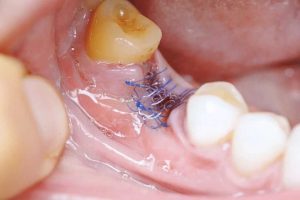
What Are Wisdom Teeth Stitches?
After their removal, wisdom teeth stitches—sutures—are inserted in your gums
- To close the surgical wound.
- Reduce bleeding.
- Hasten tissue healing.
- Prevent infection and dry socket.
The type of your procedure will determine whether the dentist chooses non-dissolvable or dissolvable stitches.
Various Wisdom Teeth Stitches
Knowing the kind of stitches used will enable you better to arrange your aftercare.
Dissolvable Stitches:
- Synthetic or natural polymers based on material—catgut.
- Their working process is slow dissolution on their own without requiring removal.
- Timeline: 5–14 days based on the content and healing pace of your body.
Non-dissolvable stitches:
- Materials could include polyester, silk, or nylon.
- How they work: Usually removed seven to ten days following surgery, your dentist will remove.
- Important Advice: Never try to take these out of yourself.
Figure-eight stitched pattern:
Applied when more strain is required to firmly cover the extraction site with gum tissue. Often utilized in more complicated procedures, they give extra stability.
Important: Inquire of your dental surgeon what kind of stitches you had for suitable after-care.
See More health Articles
- How to Repair Damaged Hair: Effective Tips and Treatments for Healthy Locks
- How Much Time Does It Take to Fill a Cavity?
- Disadvantages of Deep Cleaning Teeth: Main Risks Explained
- Dental Veneers Before and After: See the Transformation
- Why Does Mouthwash Burn? Causes & How to Stop the Sting
Maintenance of Wisdom Teeth Stitches
Prevention of problems mostly depends on good dental hygiene and mild treatment.
Immediate Post-Surgery Care:
- Bite on gauze pads to stop bleeding.
- Apply an ice pack on the outside of your cheek for 20 minutes to help reduce lower swelling.
- To reduce the risk of irritation or infection, refrain from using your tongue or fingers to touch the stitches.
Eating and Drinking Guidelines:
- Eat soft, cool meals include yogurt, soups, and smoothies;
- Avoid spicy, hot, or crunchy foods since they can aggravate the healing zone.
- To reduce the risk of irritation or infection, refrain from using your tongue or fingers to touch the stitches.
Oral Hygiene
- Beginning 24 hours following surgery, start mild saltwater rinses using ¼ teaspoon salt in 8 ounces of warm water.
- To preserve the blood clot and guarantee appropriate healing, avoid vigorous rinsing or spitting.
- Gently avoid the stitched region when brushing, to initially avoid direct touch
Do’s and Don’ts After Wisdom Teeth Removal
Here’s a brief method to make sure your sutures hold together and you recover correctly:
Do’s
- Rest and cut physical activity for at least 48 hours to help in recuperation.
- Keep your head elevated while resting.
- Follow recommended meds and antibiotics.
- Keep excellent oral hygiene using mild rinses.
- Closely follow your dentist’s directions.
Don’ts
- Don’t smoke or vape; these raise infection risk.
- Steer clear of tough, gritty, or sticky foods.
- Don’t play with or touch the stitches.
- Try not to drink alcohol till completely cured.
- Don’t miss follow-up visits.
Daily Recuperation Timeline
Usually, following wisdom tooth stitches, you can expect this:
|
Day |
What Happens |
Care Tips |
|
Day 1 |
Swelling, bleeding, numbness. |
Bite on gauze; ice packs; rest. |
|
Day 2-3 |
Swelling peaks, mild bruising. |
Gentle saltwater rinses, soft foods. |
|
Day 4-5 |
Swelling decreases, jaw stiffness. |
Resume gentle brushing, stay hydrated. |
|
Day 6-7 |
Stitches may begin dissolving. |
Gradually add soft solid foods. |
|
Day 7-10 |
Stitches dissolve/are removed. |
Continue oral hygiene care. |
|
Day 11-14 |
Significant healing. |
Return to normal diet slowly. |
Healing pace is different. Always do as advised by your dentist specifically.
Typical Problems Related to Wisdom Teeth Stitches
Understanding what is typical and what is not will help you avoid issues.
Stitches Starting to Come Loose Early
If your stitch comes out during the first twenty-four hours, get right back to the dentist. Stitches often relax somewhat as healing goes on.
Continual Pain or Swelling
Although some discomfort is normal, increasing pain or swelling following day four could indicate a dry socket or infection.
Symptoms of Infections
- Watch for: pus or seeping from the incision.
- Persistent unpleasant taste or smell.
- Swelling that becomes worse three to four days.
- Fever over 100.4°F (38°C).
Important: See your dentist right away if you believe you have an infection.
How long does it take for stitched wisdom teeth to heal?
Your mouth will continue to heal internally for several weeks; most stitches either disintegrate or are removed within 7–10 days.
Variables influencing recovery time:
- Younger people recuperate faster.
- Health issues including diabetes.
- Whether the extraction was easy or surgical
- Not brushing your teeth or smoking
When should one call their dentist?
If you notice any signs of complications, don’t hesitate to reach out to your dentist for guidance.
- Heavy, uncontrollable bleeding
- Severe pain not relieved by medication
- Early loss of stitches
- Signs of infection
- Difficulty swallowing or breathing
Although having wisdom teeth stitches sounds intimidating at first, most people heal fast and without any significant problems with the correct technique and some patience. Just as much as the surgical operation is crucial, the recovery period should be given great thought. Good aftercare can make all the difference between a quick, easy recovery path and one hampered by infections or discomfort.
You absolutely must follow the aftercare schedule recommended by your dentist or oral surgeon. Regarding drugs, diet, cleanliness, and exercise limits, follow their particular directions. Everybody heals differently, hence paying attention to your body and identifying when something doesn’t feel right can enable you to prevent such issues early on. If you have odd symptoms such prolonged pain, swelling, or indications of infection, don’t hesitate to contact your dental practitioner.
Promoting quick recovery mostly depends on keeping good oral hygiene even if you have stitches. Simple actions that pay big dividends are gentle seawater rinses, meticulous brushing, and avoiding irritants like alcohol and smoke. Selecting soft, nutrient-dense, easy-to-eat foods also helps your body heal from the inside out.
Combining proper care, attention, and a positive attitude will help you find yourself back in normal activity before you know it. Wisdom teeth removal and the stitches that follow are simply transient inconveniences on your road to improved dental health; they leave you not only smarter but also healthier and more confident in your smile!
Frequently Asked Questions
Do stitches hurt after wisdom teeth removal?
Mild tenderness is normal. If you experience severe or worsening pain, it could be a sign of a complication and should be evaluated by a dental professional.
Can I remove wisdom teeth stitches myself?
No! Always let your dentist handle stitch removal to prevent tearing or infection.
What foods are safe to eat with stitches?
Good options include:
Mashed potatoes.
Smoothies.
Yogurt.
Applesauce.
Oatmeal (lukewarm)
How can I speed up healing after wisdom teeth stitches?
Stay hydrated.
Eat nutritious soft foods.
Avoid smoking.
Rest adequately.
Practice gentle but regular oral hygiene.
